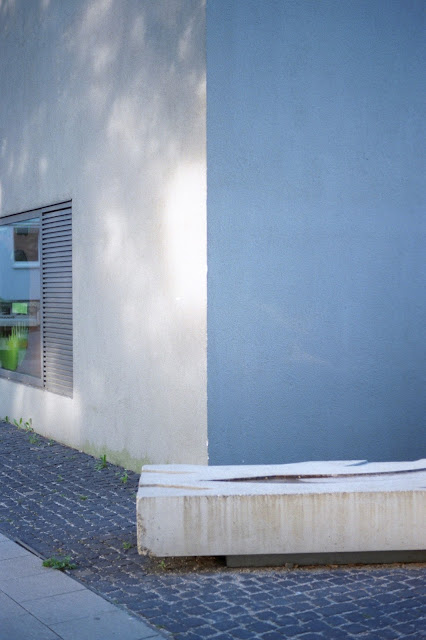Tell us about you, from where are you?
My name is Liam
and I am an Australian analogue photographer living and working in Stockholm,
Sweden. I moved to Sweden three years ago, which was a fresh start for me so I decided it was perfect
timing to follow my dream of working as a photographer.
What
is it that attracts you the most of what you have around you? What are
your inspirations. Why do you do it?
Photography for
me, is a way to escape from my reality and feeling; it is my medium to
creatively express myself. I am attracted to things that affect me directly
(cold and dark Swedish landscapes), hence my images depict themes of solitude,
loneliness, nostalgia, melancholy, anxiety (chaos), longing and masculinity. I
usually draw inspiration from outside the photography world, such as from my
surroundings and other art forms. I am most inspired by music, literature,
installations, paintings, cinema etc.
Your main concept and ideas
I direct my
camera towards things that affect me personally and I aim to question norms,
identity and masculinity.
Your
photos are planned, or instinctual? who are the people in your photos? How do
you select models to take portraits?
I am very
spontaneous with my photography and I am often inspired in the moment or feed
off the the subject I am photographing. Most of my subjects are people close to
me, such as my family and friends. One of my goals for 2018 is to branch out
and find new interesting faces and plan out my images in advance (want to
create images rather than just document something).
what
do you want to say or show by your art, why?
It all depends
on the project I am working on. But most of the time I am not really trying to
say anything at all, it just a form of creative expression for me! I also feel
that a lot of art and meaning is lost in its translation and also
misinterpreted. So I rather just shoot and let the photos speak for themselves
and let the viewer draw whatever meaning they choose to.
Tell us about your experience and education as photographer what did it give
you?
I have no
formal photography training or education in the arts. I have been shooting obsessively
for the past 5 years and have experimented with digital and analog photography.
A
film, a book and a song
Books I am
currently reading:-
- Under det rosa täcket : om kvinnlighetens vara och
feministiska strategier (Nina Björk)
- Ormen (Stig Dagerman)
- The Penelopiad (Margaret Atwood)
- Vegetarian (Han Kang)
- A Man and Two Women (Doris Lessing)
Albums I am
currently listening to:-
- Wasps Nest (The 6ths)
- Daddy’s Highway (The Bats)
What camera do you use? lense?
I love testing/
shooting with a variety of analog cameras and I am constantly in the process of
buying and selling (not too sentimental about it at all). The longer I shoot
the more I realise that it doesn't really matter what camera you use. It is
often best to keep it simple and for that reason my favourite cameras have been
the cheapest ones, like my Konica T slr paired with 50mm 1.7. Other cameras I
currently have in the my bag are, contax g1, contax g2, pentax 67, canon ae1,
olympus pen ee & nikonos. My two favourite focal lengths are 50mm and 28mm,
with these two lenses I can capture everything I need!
Tell about exhibition if you‘ve had any, or you are planning.
I have
exhibited my work in small exhibitions and galleries in Sweden, Australia,
Italy and Germany. The most recent one being a group exhibition in Berlin with three other photographers
Annika Weertz, Joe Barrett and Phoebe Jane Barrett, around the theme of
challenging traditional portrayals of masculinity.
Do you sell prints? How do you make it and where can someone buy?
Not selling
prints at this stage. Maybe sometime in the not too distant future.
What was your most big success?
Hopefully still
to come!
Favourite photographer.
My favorite
contemporary photographers are Maya Beano, Edie Sunday, Prue Stent, Lauren Withrow, Nguan, Niklas
Porter and Laura Kampman.
What
is your occupation, job, interest besides photography. describe it.
I currently
working as a wedding photographer travelling all around Europe. I am also
interested in classic cinema, literature and veganism.
Which
advice would you give someone who wants to become a (professional)
photographer?
So if I had to
give one piece of advice to someone starting out it would be to take the time
to find your craft or style, don't just go in copy what someone else is doing
or what is popular on Instagram or Flickr. Look outside of photography to other
art forms for inspiration and find something that works for you. Create for
yourself instead of your intended audience! In the wedding industry it is all
about standing out rather than forming to norms and traditions, if you do
something different then people will book you because of that (not great advice
for commercial photographers).

















































